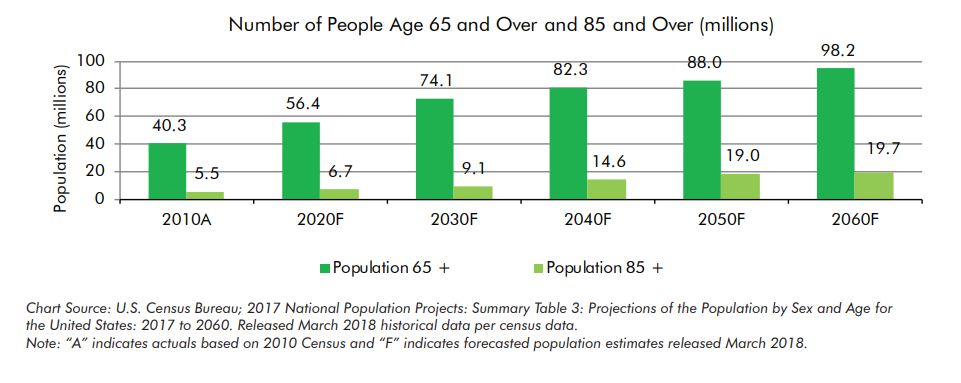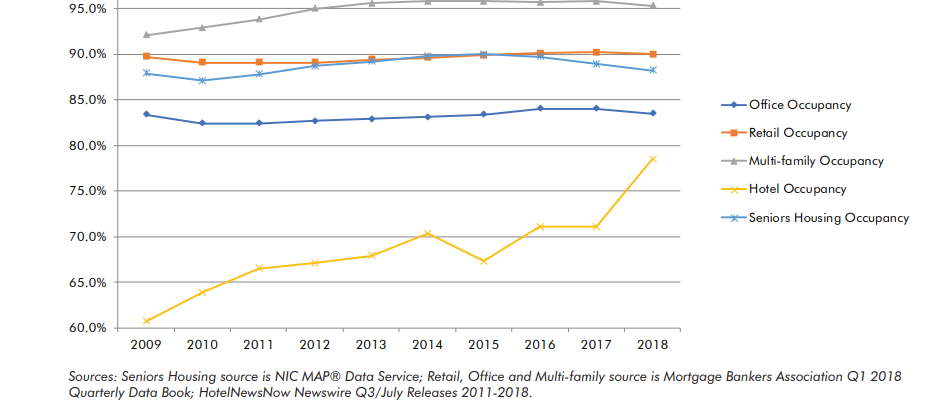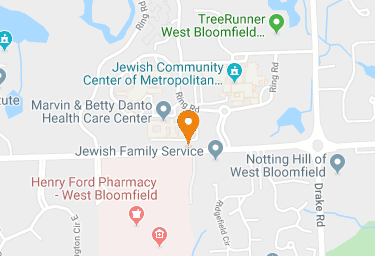Senior Living
Senior Living and Housing:
Everything You Need To Know

Senior living is about living independently and happily with required level of medical or daily living support from professionals. You can pursue your hobbies, make new friends, and do anything you want, without worrying about home maintenance, landscaping, meal preparation or other activities of daily living (ADLs).
Senior communities provide a wealth of opportunities to participate in recreational activities and have an enjoyable time with people of your age. Thus, it helps you avoid potential isolation and loneliness that is often associated with elderly. You can even get the required medical support from skilled medical professionals in an out-home senior care facility, or even at your home.
Overall, senior living facilities makes your golden years full of happiness, freedom and satisfaction, while being safe. With senior housing, you can choose the lifestyle you always wanted after retirement.
However, choosing a senior living community can be a significant decision. From what where to begin and cost concerns to which questions to ask, the list of considerations can be overwhelming. While it is not an easy process, it is not insurmountable, either, if you understand all elements that go into finding the right living arrangements for your senior loved one.
Our purpose on this page is to educate you on all important elements related to senior housing and living, so that you can make an informed decision.
Let’s have a look:
Search for a senior living community
[search]
Senior Housing and Living Communities by Popular Cities
[cities]
Senior Housing and Living Communities by State or Province
[states]
What is Senior Housing and Living?
Senior housing typically is a property/community or possibly a residential house geared to the 55+ population. There are a variety of terms in this industry when it comes to "Senior Housing."
Apart from wrinkles and graying hair, aging can bring unique health issues. Older adults often deal with chronic health conditions, impaired cognitive condition, sensory impairment, and many more. These illnesses are often prolonged and lead to issues such as immobility, forgetfulness, malnutrition, and loneliness.
Because of these situations, the elderly struggle with activities of daily life. They find it difficult to keep up with the house chores, home maintenance, landscaping, and even, meal preparations. Additionally, with adult children being occupied with their own jobs and kids, the feeling of isolation and loneliness conquers them.
You seek medical or emotional assistance from someone who could be by your side every time you want.
If it sounds familiar to you or your senior loved one, it is time to move to a senior housing community. Senior living provides a healthy, enjoyable, and safe place for the elderly where they can spend the golden years of their life successfully and happily.
Senior housing facilities are also known as active-adult communities or age-restricted communities. They offer independent living, assisted living, long-term care, skilled nursing care, etc. Some senior living facilities offer single-family homes that people can buy, while others offer rental apartments. There are also in-home senior living options are available. You can hire medical or ADL caregivers who come to your home to support you.
In the USA, the federal Department of Housing and Urban Development (HUD) regulates senior housing to ensure their compliance with the Housing for Older Persons Act of 1995 (HOPA).
Demographics of Senior Housing & Living in the USA
By 2025, the population of the 65-plus age group in the U.S. is projected to be 88.0 million, nearly double the current population. Additionally, by 2056, the 65-plus age group population is estimated to outnumber the under-18 age group population in the country. The projected growth in the 65-plus age group presents an increasing demand for senior housing in the U.S.[1]

In 2017, National Senior Campuses reported more than 19,000 senior living units nationwide. Seven percent of older adults require personal care from other persons for meal preparation, personal grooming, and transportation.[2]
For seniors who require more intensive care, there are nursing care facilities which offer 24-hour medical attention rather than merely assisting with personal care and household tasks.
In response to the growing need for third-party care providers, many senior living communities have been established. As of the fourth quarter of 2018, nearly 42 percent of senior housing were majority nursing care, while 36 percent were majority assisted living. In the private sector, rents are extremely high, but the amount includes advanced and professional care.
According to the National Healthcare Quality and Disparities Reports, Nebraska is the best city for retirees, in terms of affordability, crime, culture and wellness. Regarding health care specifically, Nebraska has 61 percent of the health measures that achieved the benchmark state its benchmark.[3]
Demographics of Senior Housing & Living in Canada
The population age 65+ in Canada has increased steadily over the past 40 years, totaling over six million and making up 17% of the total population. By 2037, the population of 65+ and 80+ could total about 10.4 million and 3.5 million, respectively.[4]
Furthermore, as of 2016, 6.8% of Canadian aged 65+ live in institutional residents, whether in a long-term care facility or a retirement home. This percentage increases to 30% for the population aged 85+, caused by the loss of a marital partner or a chronic condition. Although women form a higher percentage of senior Canadians living in institutional facilities, the life expectancy of men has steadily increased over the last 16 years.[5]
The Conference Board of Canada reports that the cost to the Canadian federal government associated with caring for the senior population is expected to increase from $281M in 2017-2018 to $4.3B in 2026-2027. Overall, governments of Canadian provinces and territories may need an additional $93B over the next 10 years to meet the needs of the country’s aging population. The demand for long-term care beds will increase. The country could need an additional 43,000 new LTC beds over the next five years, and it is expected that there will be total 199,000 additional beds by 2035.[6]
These demographics demonstrate that the demand for senior living facilities will significantly grow in the future.
Senior Housing & Living Types & Services
There are many senior housing options to choose from, which can be overwhelming for anyone. The trick to making the right choice is matching the housing services with the needs, interests, and personality of the elderly.
Here are different types of senior living options available to you:
Independent living Communities
Independent living arrangements are for seniors who want to enjoy the benefits of communities, free from worries of house maintenance, cooking, or housekeeping. These are age-restricted multifamily rental properties provide residents with central dining facilities included in their monthly fee.
Many facilities also provide other services such as housekeeping, laundry, transportation, and social and recreational activities. Most of these facilities do not provide assistance with activities of daily living (ADLs) such as medication supervision, bathing, dressing, toileting, etc. There are no licensed skilled nursing beds in the community.
Independent living is available in many different forms, from subsidized senior housing to continuing care retirement homes. People can buy or rent their own units in these communities.
Independent living provides seniors opportunities for socialization. Generally, the housing is easier to navigate, more compact, and includes help with outside maintenance.
Assisted Living Communities
Assisted living offers the same services like independent living. The only difference is a majority of the units provide supportive care from trained staff to staff who are unable to live independently. These seniors require assistance with activities of daily living, such as bathing, dressing, medication, eating, ambulating, and toileting.
There may be some nursing beds and/or wings dedicated to residents dealing with Alzheimer’s or other forms of dementia.
Typical services include on-call staff, meals, bathing, dressing, medication management, housekeeping, and transportation. Most facilities have a central dining area and common areas for scheduled recreational and social activities.
Nursing Home or Skilled Nursing Facility
Nursing homes are licensed daily rate or rental properties available for seniors who need 24-hour supervised care with meals, activities, and health management and support. These senior housing facilities are ideal for older adults suffering from severe or debilitating physical or mental diseases and are unable to care for themselves.
Some have physical and occupational therapists on staff. Some facilities also provide Alzheimer’s care, with special facilities and layouts for those who suffer from dementia.
A licensed physician supervises the residents’ care, and a skilled nurse or medical professional remains available on premises 24 hours a day. Some nursing homes have occupational and physical therapists on staff. Some facilities also provide Alzheimer’s care, with special layouts and facilities for residents. In most cases, nursing homes are licensed for Medicaid and/or Medicare reimbursement.
Memory Care Communities
This specialized senior housing provides care to those with varying degrees of Alzheimer’s or dementia. These facilities provide a safe, secure, and structured environment, paired with around-the-clock supervision.
Memory care centers involved trained staff, top-of-line resources, and expertly-crafted recreational activities
One of the goals of memory care is to help slow the progression of Alzheimer’s or dementia while also enabling a senior to feel purpose, a sense of satisfaction and enjoyment on a daily basis. Memory care communities have trained staff, top-of-the-line resources, and expertly crafted activities to help accomplish this goal.
For instance, a community may engage residents with brain fitness exercises and memory games, and by providing specialty food programs, both of which can help fight off the effects of Alzheimer’s and dementia. And it’s all done in an environment that can make a senior feel comfortable and safe.
Long-Term Care Facility
Long-term care facility provides medical support and services to seniors over an extended period of time. The vast majority of long-term care recipients are people over the age of 65.
These senior housing communities provide temporary or permanent long-term care, depending on the underlying reason for the care. Typically, other senior living communities like memory care, assisted care, and nursing homes have specialized units for providing long-term care to seniors.
Respite Care Services
Respite care services give primary caregivers a break from the demanding task of caregiving. They provide professional assistance with daily chores and health needs.
In the meantime, the primary caregiver gets a break from the physical and emotional toll of caregiving. Respite services can be provided in-home or at a senior housing facility.
Home Care Service
Home care service is for older adults who want to age in their own home among their family members. Home care lets these seniors live happily and independently in the comfort of their home.
In-home caregivers support with cleaning, meal preparation, mobility, eating, bathing, dressing, and many more activities as per the senior’s needs. It may also involve varying levels of medical assistance for the elderly suffering from illnesses.
Senior Housing and Living Laws
Laws and regulations for senior housing and living vary by state, province, and territory. Here’re the basic rules outlined by the government or concerned authority for senior housing:
Age Qualifications
At least 80 percent of units in senior living communities, whether for rent or purchase, must have one occupant age 55 years or older. HUD mandates a biyearly audit of residents and submits the age proof of each individual living in the community to HUD.[7]
Each occupant needs to show identification such as a driver’s license, immigration card, birth certificate, passport, military ID, or state-issued ID.
Marketing
HUD requires that the management of a senior housing facility directs its advertising and marketing only to the senior community and not to younger households. If a community finds a community targeting younger households, it could lose its designation as a senior community.
Community Design
In large developments, HOPA requires senior communities to be separate from other housing units. In the 55-plus rental community, all apartments must be in a building, separate from unrestricted rentals. On the other hand, in for-sale home communities, active adult housing should be contiguous.
In Canada, The Retirement Homes Act, 2010 (Act) (RHRA) regulates the licensing and regulation of retirement homes on the government’s behalf. RHRA also educates the public about the Act and gives policy advice to the government.[8]
The RHRA’s duties also involve handling complaints about retirement homes in Canada and enforcing the standards in the Act.
Senior Housing and Living Costs
The cost of senior housing depends on the care type you need, as well as the size and location of the accommodation, and the quality and number of amenities you seek.
Use the following tool to figure out senior living cost details by state and region. The tool displays average costs for different types of senior living.
| Type of care | Average Cost in Region |
|---|---|
| Skilled Nursing Facilities Private Room Annual Rate: | $91,279.20 |
| Skilled Nursing Facilities Semi-Private Room Annual: | $77,573.45 |
| Assisted Living Facilities Monthly Rate (2 bedroom): | $5,699.17 |
| Assisted Living Facilities Monthly Rate (1 bedroom): | $5,048.10 |
| Assisted Living Facilities Monthly Rate (Studio): | $4,361.03 |
| Registered Nurse Per Visit Rate: | $134.31 |
| Licensed Practical Nurse Per Visit Rate: | $121.60 |
| Home Health Aide Hourly Rate: | $22.63 |
Cost of Senior Housing in the USA
Most expensive state for adult day health care is Alaska that costs about $3, 050, while the least expensive state Albama costs around $596. Alaska remains the most expensive state for nursing home facility also, costing nearly $24,850, while Oklahoma offers the most affordable nursing home communities, costing $5,020.[9]
For home healthcare that includes homemaker and home health aide services, the national median monthly cost is around $3,820. The same is about $1,500 for adult Day Healthcare, nearly $3,650 for assisted Living, and about $6, 850 for semi-private rooms in a nursing home.[10]
Independent living communities in the USA cost between $1,500 and $10,000 per month, depending on whether you choose a townhouse, apartment, motor home, or mobile home. Senior co-op housing typically costs between $100K and $230K or more.[11]
The national average is $20/hour with different state averages ranging between $16 - $27 / hour. The same for assisted living communities is $3,800/month and different state averages range between $2,600 and $5,800. Alzheimer’s or dementia care costs an additional $1,200 monthly on average. For skilled nursing residences, the average cost for a shared room is $250/ day with different state averages ranging between $150 / day to $800 / day. A shared residence typically costs 80-90% of a private one.[12]
Cost of Senior Housing in Canada
The average monthly rent for standard spaces in seniors’ residences in Quebec is $1,788. The average varies depending on the unit type: from $1,487 for bachelor units to $2,307 for two-bedroom apartments. Differences also vary according to the location, with average rents ranging between $1,599 in Saguenay and $2,140 in Gatineau.[13]
The average rent for a standard space in Ontario is about $3,760[14] while that in Alberta is $3,260.[15]
Average rent for independent living facilities in British Columbia is $3,280 in 2019. The bachelor/studio units are the most expensive senior housing units in the province.[16]
The overall average rent in Manitoba for standard spaces is $2,820, while the average rent in the Winnipeg CMA is $2,830 in 2019.[17]
Click here to get an accurate idea of senior housing costs by province and territory, care type, and location in Canada.
The Most Affordable Cities For Senior Housing and Living Facility
| City | Cost |
|---|---|
| 1. Wilmington, NC | $3,692 |
| 2. Tucson, AZ | $3,774 |
| 3. Tampa, FL | $3,812 |
| 4. Mesa, AZ | $3,856 |
| 5. Orlando, FL | $4,132 |
| 6. Baltimore, MD | $3,950 |
| 7. Fayetteville, NC | $4,045 |
Occupancy and Vacancy Rate
Aggregate senior housing annual rent growth was estimated to be 2.7% in the first half of 2018. The same for nursing care was 2.5% in the same period of time.[18]
The senior housing occupancy rate has been consistent and never dropped below 90%, even during the economic downturn in 2008.

|
Newfoundland 7.3% |
New Brunswick 8.3% |
Nova Scotia 10.3% |
P.E.I 7.5% |
Quebec 7.2% |
|
Ontario 10.3% |
Manitoba 3.0% |
Saskatchewan 16.7% |
Alberta 13.8% |
British Columbia 4.2% |
Senior housing vacancy rates vary across Canada as of CMHC report 2019. In Atlantic Canada, vacancy rates hovered between 7-11%[19], while in Saskatchewan and Alberta, they’re higher, between 13% and 17%. Manitoba is an exception, with a vacancy rate of just 2.8% in 2019.
The following image shows vacancy rates for standard spaces nationwide:
Choosing a Senior Housing Facility
Choosing a senior housing involves more than simply choosing a floor plan. After all, senior living is about a lifestyle. In addition to meeting older adult’s social, recreational, educational, and cultural needs, you also want to ensure that the facility has a continuum of care that adapts to the senior’s changing needs.
Consider the following important things when exploring your senior living options:
Accreditations
Only accredited senior living facilities have demonstrated their ability to meet the standard of care. You are encouraged to ask the facility about their accreditations along with other measures for ensuring the quality and safety of older adults.
Location
Are you looking for a peaceful place or a community with a more urban vibe? Proximity to family members and easy accessibility are paramount.
Type of community
From independent senior living facilities to rental retirement communities and memory care, senior living arrangements vary in nature. They come up in a variety of shapes and sizes, including everything from single homes to apartments and shared units. Depending on personal preferences and financial considerations, you may choose a community that best fit your needs.
Levels of service
Every senior has different needs. Not all senior living facilities offer the same level of service. Are you looking for an assisted living facility, skilled nursing care, at-home services, etc? Memory care communities are appropriate for seniors living with Alzheimer’s disease or other cognitive impairments.
Activities & Entertainment
Senior housing facilities offer many basic and extensive enrichment-oriented programs. Some communities allow residents to customize their favorite activities, while others have fitness clubs and swimming pools for active seniors. Learning which centers offers which activities may be helpful in determining which one is the right fit for your aging loved one.
If your aging loved one enjoys going to restaurants, watching movies, fishing and bowling, finding a residence near these helps support senior involvement while also nurturing social connections.
Transportation
You are encouraged to select a community with easy access to public transportation options such as trains and airports. You may also choose a residence that facilitates transportation, making it easier for seniors to travel.
References
- CBRE, 2018. Senior Housing Market Insights: 2018 Q2 Review, cbre.us
- Jennifer Rudden, May 23, 2019. U.S. Senior Housing - Statistics & Facts, statista.com
- Adrian D. Garcia. July 10, 2019. The best and worst states for retirement, bankrate.com
- Seniors Population Canada, statcan.gc.ca
- Rochelle Garner, Peter Tanuseputro, Douglas G. Manuel and Claudia Sanmartin. May 16, 2018. Transitions to long-term and residential care among older Canadians, statcan.gc.ca
- Frederic Blondeau and Stephan Boire. December 4, 2018. The Ultimate All-Weather Investment: Canadian Senior Living Real Estate, echelonpartners.com
- Brad Breeding. December 18th, 2017. Understanding Age Requirements at CCRCs & Other Senior Living Communities, mylifesite.net
- Understanding The Retirement Homes Act, 2010 (Act), rhra.ca
- Raul. 26 June 2017. The Rising Cost of Senior Care in America, howmuch.net
- Andrew Lis. May 23, 2017. The Average Cost of Senior Care in Every State, msn.com
- Senior Retirement Lifestyles, seniorliving.org
- August 2017. Senior Care Costs / Aging Care Calculator, payingforseniorcare.com
- 2019. Seniors’ Housing Report: Quebec, cmhc-schl.gc.ca
- 2019. Seniors’ Housing Report:Ontario, cmhc-schl.gc.ca
- 2019. Seniors’ Housing Report: Alberta, cmhc-schl.gc.ca
- 2019. Seniors’ Housing Report: British Columbia, cmhc-schl.gc.ca
- 2019. Seniors’ Housing Report: Manitoba, cmhc-schl.gc.ca
- CBRE National Senior Housing. 2018. Senior Housing Market Insight, cbre.us
- 2019. Seniors’ Housing Report: Atlantic, cmhc-schl.gc.ca
We found 15 communities listed in this group.

























